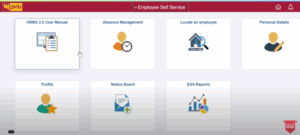How to Become an Effective Product Tester in 8 Easy Steps

In-home product testing has become an essential aspect of modern consumer culture. As businesses strive to deliver innovative and consumer-centric products, they rely on the invaluable feedback provided by product testers. For those interested in becoming effective product testers, mastering the art of in-home testing products is crucial. In this article, we will explore the fundamental principles and best practices that will help you become a skilled and influential product tester.
Step 1: Embrace Objectivity
As an in-home product tester, it is vital to maintain objectivity throughout the testing process. This means setting aside personal biases and focusing on evaluating the product’s merits and shortcomings. Objectivity ensures that your feedback is honest and constructive, enabling manufacturers to make informed improvements.
Begin by creating a standardized testing procedure that includes criteria for evaluation, such as usability, functionality, design, and performance. Follow this guideline diligently for every product you test, allowing you to compare different products objectively.
Step 2: Establish a Testing Environment
For precise outcomes, set up a steady and monitored testing space in your residence. Elements like illumination, room temperature, and ambient noise can impact your judgment of an item. Controlling these aspects ensures equal evaluation conditions for every product you assess.
Step 3: Take Comprehensive Notes
Efficient product reviewers are diligent in taking notes. Record your observations, thoughts, and any problems faced during the evaluation phase. Accurate notes enable you to offer in-depth and useful feedback to creators, helping them improve their products.
Your records should comprise details on the item’s packaging, setup simplicity, overall user interaction, and any unanticipated performance features. The more comprehensive your records, the more significant your contributions will be to the product development team.
Step 4: Evaluate Over an Extended Period
Some items may disclose their pros and cons only after prolonged usage. To consider durability and ongoing performance, examine the product over a sensible time frame. This strategy is especially pertinent for things like electronics, kitchen gadgets, and beauty items.
Testing across a longer period allows you to gauge how well the product endures wear and tear while guaranteeing that your input is all-encompassing and well-balanced.
Step 5: Interact with the Product
The most successful product reviewers are fully involved in the evaluation process. Engage with the item as you would in your everyday life to mimic real-world situations. For example, if you’re examining a smart home gadget, utilize it as you would any other smart assistant. Or if you’re testing a cooking appliance, incorporate it into your meal preparation routine.
Engaging with the product helps you understand its practical applications and identify potential areas of improvement or innovation.
Step 6: Share Your Experience
While thorough note-taking is essential, sharing your experiences verbally or through multimedia can add depth to your feedback. Consider recording video reviews, taking pictures, or creating a written or audio diary to showcase the product’s usage visually.
Visual content can resonate with manufacturers, providing them with real-time reactions and emotions that may not be adequately captured in written notes.
Step 7: Collaborate with Other Testers
Engaging with a community of product testers can be highly beneficial. Sharing insights, discussing findings, and exchanging tips with fellow testers can help broaden your perspective. Online forums, social media groups, or organized product testing communities can serve as platforms for such collaborations.
Step 8: Be Honest and Respectful
As a product tester, your feedback shapes the product’s future. Therefore, it is essential to be honest in your assessment while remaining respectful and constructive. Avoid making personal attacks or using derogatory language in your evaluations.
Focus on specific aspects of the product that could be improved and offer suggestions on how to enhance its performance. Remember, your feedback has the potential to influence manufacturers to develop products that truly meet consumers’ needs.
In-home product testing is an art that requires objectivity, dedication, and a commitment to providing valuable feedback. By embracing objectivity, creating a controlled test environment, taking detailed notes, testing over time, and engaging with the product, you can become an effective product tester. Collaborating with other testers and sharing your experiences will further enhance your abilities in this rewarding role. Ultimately, your contributions as a product tester can drive innovation, shape consumer experiences, and lead to the development of exceptional products that meet the needs and desires of people worldwide.

Mahesh Kumar is a dynamic marketing consultant and tech enthusiast with a passion for driving business growth through his innovative strategies and cutting-edge technology. With 6 years of experience in the industry, he has helped numerous businesses leverage the power of digital marketing to reach their target audience, build brand awareness, and increase sales.







